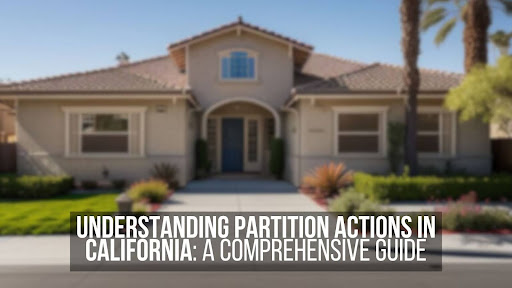In California, when co-owners of real property disagree on how to manage or divide their shared property, a partition action in California may be the solution. A partition action is a legal process that allows co-owners to either physically divide the property or force a sale and distribute the proceeds among the owners. This comprehensive guide will help you understand the ins and outs of partition actions in California.
Legal Definition of a Partition Action
According to CaliforniaCode of Civil Procedure Section 872.210, a partition action is defined as an action taken to divide a California real estate property fairly among its co-owners. It is an absolute right of a co-owner to file for a partition action, regardless of the wishes of the other co-owners.
Reasons for Filing a Partition Action in California
There are several reasons why a co-owner may choose to file a partition action in California, including:
- Disagreements among co-owners on how to use or manage the property
- One co-owner wants to sell their interest in the property while others do not
- Inherited property where one or more heirs live in the property and refuse to sell or leave
Partition actions are common among siblings who inherit property from their parents, unmarried couples who have separated, and friends or family members who jointly purchased a property.
Process of Filing a Partition Action
To initiate a partition lawsuit process,the following steps must be taken:
- File a complaint with the Superior Court of California in the county where the property is located. The complaint should include A description of the property, including its legal description and street address interests that the plaintiff has or claims in the property. The estate as to which partition is sought and a prayer for the partition of the interests.An allegation of the facts justifying relief when a sale of the property is sought
- Serve the complaint on all named defendants and file proofs of service with the court within 60 days of filing the complaint.
- Defendants have 30 days to respond to the complaint, which may include filing an answer and raising any defenses or counterclaims.
- The court will determine each party’s ownership interests and decide on the manner of partition, whether by sale, partition in kind, or partition by appraisal.
At Resolve Wannon, our experienced mediators can guide you through the partition action process, helping to minimize conflicts and reach a fair resolution for all parties involved.
Types of Partition Actions
There are three main types of partition actions in California:
- Partition by Sale: The most common type of partition, where the court orders the sale of the property and distributes the proceeds among the co-owners based on their fractional interests.
- Partition by Appraisal: An alternative to partition by sale, where one co-owner buys out the interests of the other co-owners at a price determined by an appraisal of the property’s market value. This requires the consent of all parties.
- Partition in Kind: The physical division of the property among the co-owners. While this is the default form of partition under the law, it is not always practical, especially for single-family homes or smaller properties.
Avoiding a Partition Action
Partition actions can be lengthy and expensive, so it is best to prevent them from happening in the first place. When multiple parties purchase property together, they should anticipate potential future disputes and establish clear agreements regarding the management and sale of the property.
For inherited properties, creating a comprehensive estate plan that outlines how the property should be divided can help minimize conflicts among heirs.
Conclusion
Partition actions can be complex and emotionally charged, especially when they involve family members or close friends. As a mediation firm, Resolve Wannon understands the importance of finding amicable solutions to property disputes.
Our experienced mediators can help you navigate the partition action process, working to minimize conflicts and reach a fair resolution for all parties involved.
If you are considering filing a partition action or have been served with notice of a partition by another co-owner, contact Resolve Wannon at 310-592-4359 to discuss your situation and create a plan for moving forward.
Partition Actions in California: Top FAQs Answered
Q: Who can file a partition action in California?
A: Any co-owner of real property in California can file a partition action, regardless of the size of their ownership interest.
Q: How long does a partition action typically take?
A: A partition action can take anywhere from a few months to over a year, depending on the complexity of the case and the cooperation of the parties involved.
Q: Can a partition action be stopped once it has been filed?
A: Once a partition action has been filed, it cannot be stopped unless all parties agree to a settlement or the court dismisses the case.
Q: What are the potential outcomes of a partition action?
A: The potential outcomes of a partition action include a physical division of the property (partition in kind), a forced sale of the property with the proceeds divided among the owners (partition by sale), or a buyout of one owner’s interest by another (partition by appraisal).
Q: What factors can impact the duration and complexity of a partition action?
A: Factors that can impact the duration and complexity of a partition action include the number of co-owners involved, the level of cooperation among the parties, the complexity of the property’s ownership structure, and any disputes over the property’s value or the division of proceeds.
